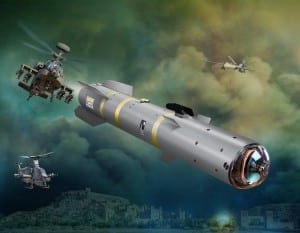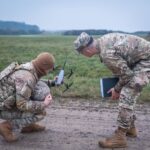
The Army successfully completed a Joint Air-to-Ground Missile (JAGM) flight test in which it exercised the weapon’s active fire and forget capability for the first time, the service’s program manager announced Aug. 27.Unlike its predecessor the AGM-114 Hellfire, which uses a laser to engage a target, JAGM was designed with a dual mode guidance that combines a semi-active laser and millimeter wave radar. During the test on Aug. 25 at Eglin AFB, Fla., the missile received targeting information and guided…













